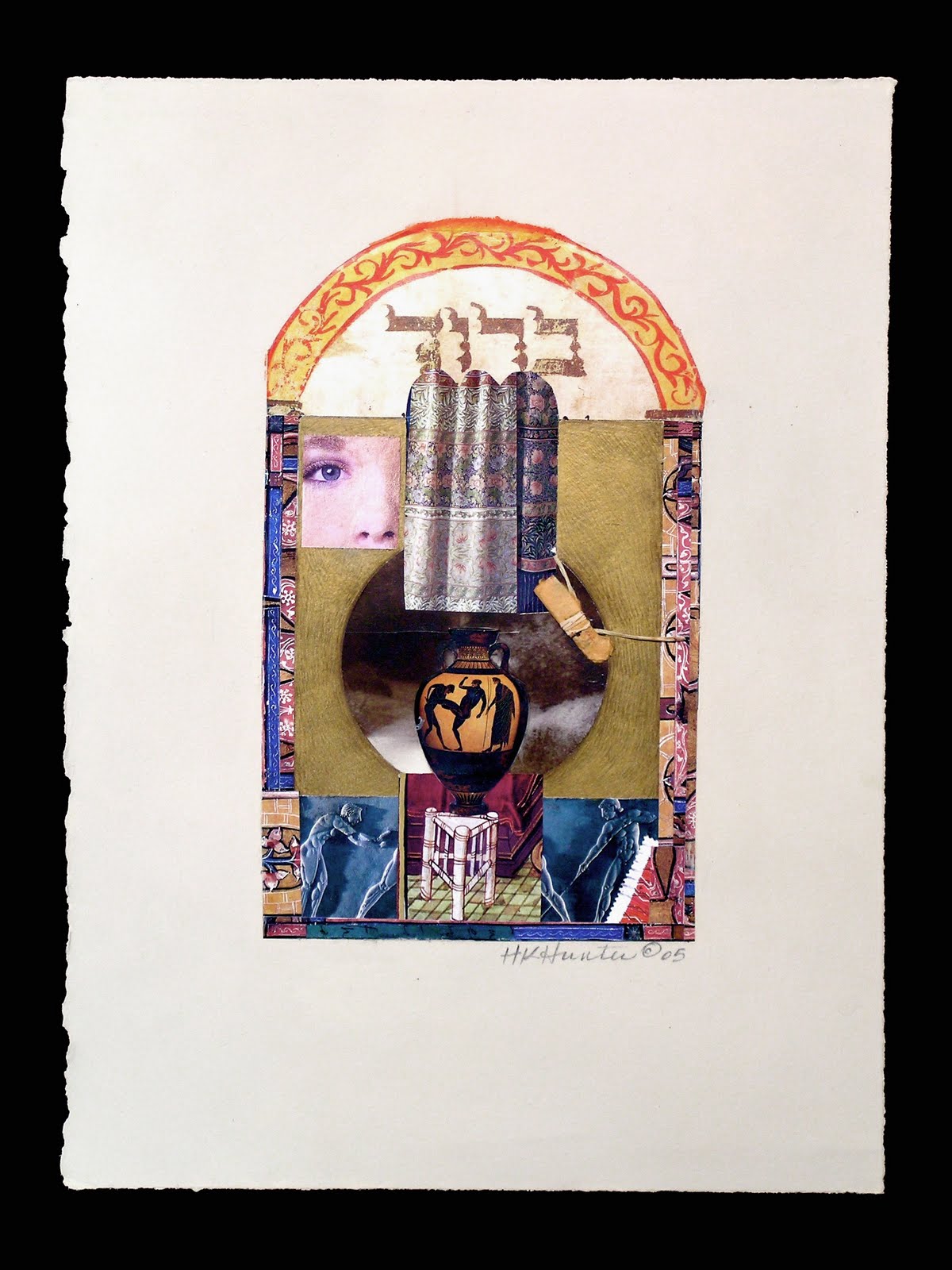At the end of the day, ideas gather. The hours of February 13th lay unfurled behind me and all of the things I wanted to do or dreamed of doing collect into this wonderfully rich compost. The ideas I've been holding inside of me combine with my regret that I didn't try them out--and I'm off. This is where inspiration begins.
Where do ideas come from?
Where do ideas come from? I've been pondering this question in my mind, turning it over in my mind like a gem. Finally, I decided that in order to answer it, I'd break that big gem down into many smaller gemstones (and thus many new gems!) I'm looking at my subject matter first--followed by inspiration, points of departure, choice of materials and finally style--because style becomes the lens through which we understand our subject.
That all said, when I think about subject, it often feels as if the subject chooses me rather than the other way around. Often my subject is a path of inquiry that I want to investigate in my art work. When I first became interested in studying Judaism, I began exploring the religion on thick creamy sheets of BFK Rives, working with Jewish symbols long before I visited a synagogue or met with a Rabbi. My quest begins in the studio. My subject can also be something that is tugging at me, weighing heavily on my mind and heart. Most recently that has been my work at the hospital. The recent deaths of a number of children we'd served took me to the edge of burnout. As part of my own grieving process, I began work on a series loosely titled "Remembrances." Small 6" x 6" collaged panels commemorate children the children I knew and loved. As I finish this series, I'm looking around for clues about the next one. I'm not sure yet where I'm going, but trust in my curiosity and where it will lead me.
Putting the Pieces Together
In my studio the other day, I caught sight of an exhibition catalogue that lay on one of my work tables. The exhibit featured a seventy year old South Carolina artist, Aldwyth, who had never before shown her art, but had an amazing store of work reminiscent of Joseph Cornell with a slightly darker flavor. The piece that I fixed on featured a collection of puzzle pieces stained shades of umber and burnt sienna with the printed word "WORK' on all of the pieces. They were glued in a seemingly random pattern inside a wooden box whose narrow lip had fragments of sentences glued to it. As I looked, I began to ruminate on "how things fit together" and decided to put that idea to work in my art therapy group at the hospital. That afternoon, I took four 9" x 12" sheets of watercolor paper and drew curving lines that divided the paper into four pieces. The volunteers and I cut up the paper and quickly realized that we wouldn't be able to put them back together unless we wrote a number on the back and noted "B" for back. Otherwise, people might end up drawing on the back! After we'd cut the pieces up, I wanted to mix them up so that people would not know which piece they had or how it fit back together.
I could not have anticipated the reaction of both the children and the volunteers. They loved it and covered the pieces with geometric designs, stripes, mandalas, teddy bears and flowers drawn and painted with markers and watercolors. What is it about separated pieces of cardboard or paper that makes someone want to put them back together again? Before the paint was dry, the children and adults eagerly tried to glue them down. The wish to heal, to fix, to mend, to become whole again within the walls of the hospital was made manifest. That wish strikes me as the motivation of most of us; we want so much to gather the puzzle pieces of our lives and see what we can make of them.
Interview with Jan Ferris in Sacramento Magazine

February 2010 If you click on the title above, you can read an interesting view of my work as an art therapist. The interview with Jan Ferris, the writer, took place at time when I had lost many children whom I was close to at the hospital. All were girls, all with some form of cancer. The interview reflects my feeling of darkness at that time and, simultaneously, the capacity of art to carry me on. Using the cloth, bits of paper and paint, I've created panels for each of these children. As Jan noted, I want to express my belief that these lives do matter and do live on in all those who knew them.


